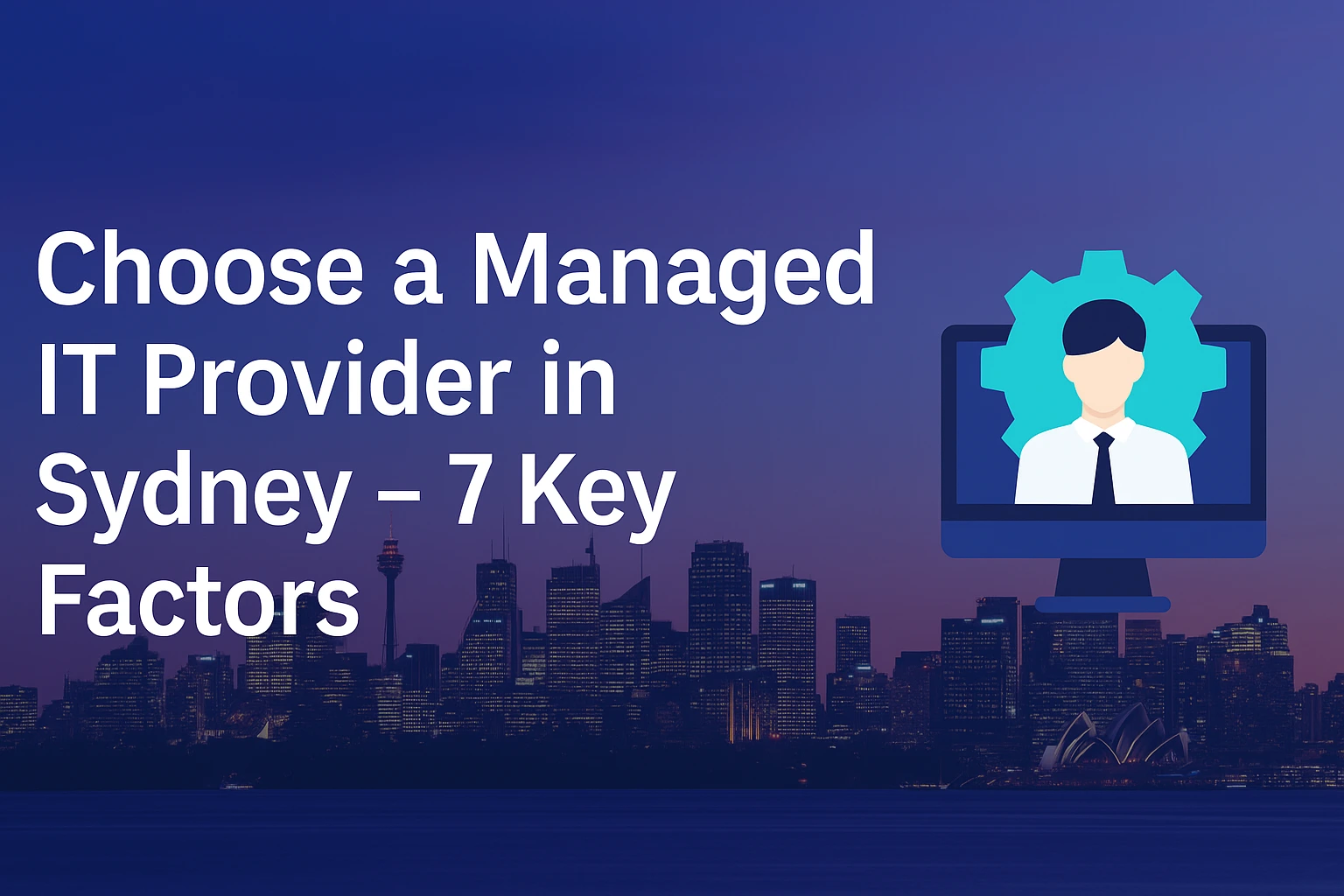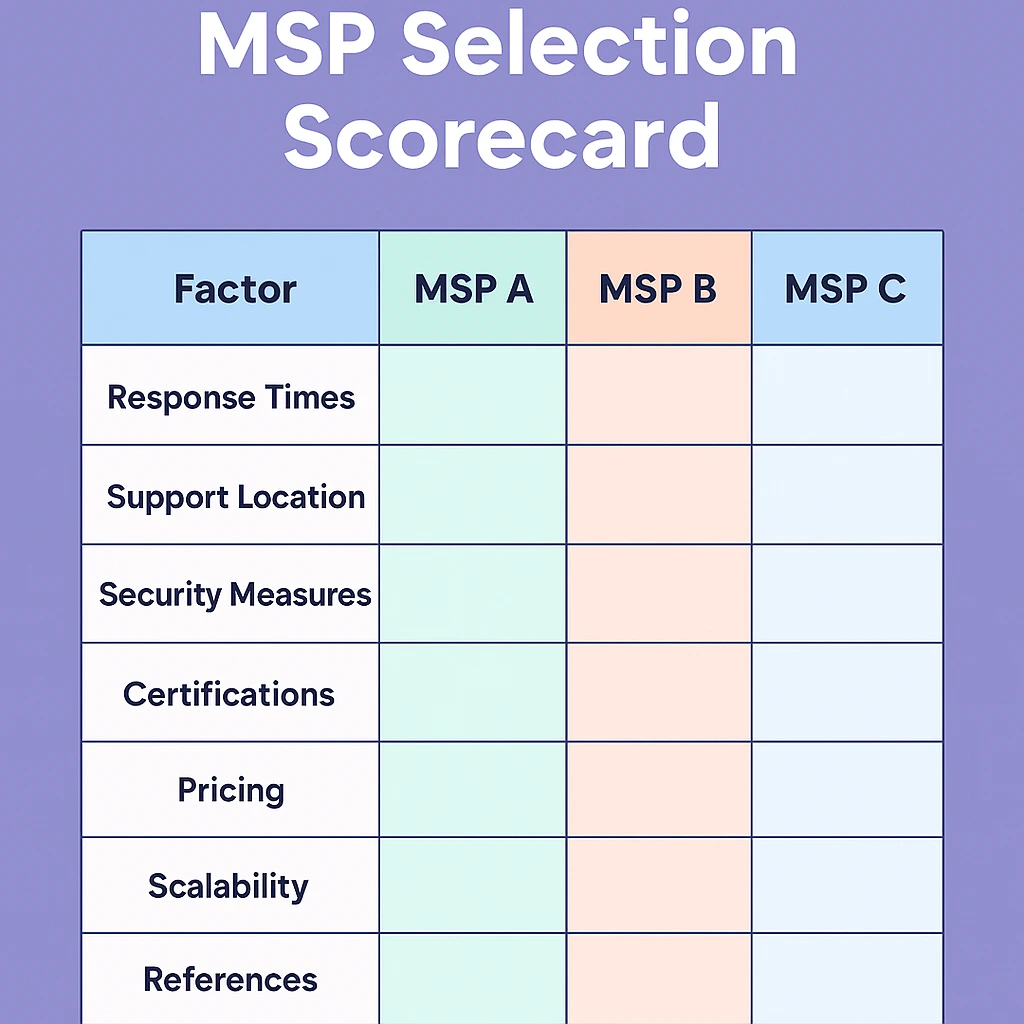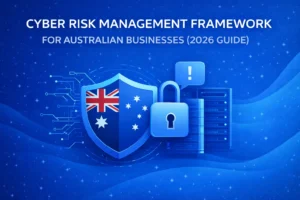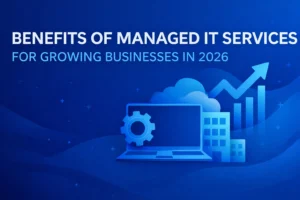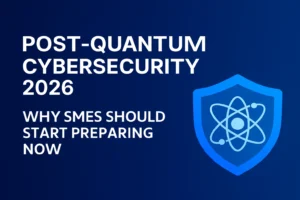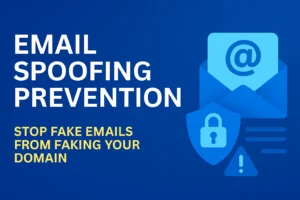Why Picking the Right MSP Matters in 2025
An out-of-service laptop is annoying; a two-hour network outage costs the average Sydney SME AUD 17 800 in lost revenue and staff idle time (ACSC downtime model, 4 December 2025). Your Managed IT Provider (MSP) is the insurance policy—and sometimes the culprit. Sydney’s market is crowded, so choosing on price alone is risky. Below are seven must-check factors plus a downloadable scorecard to help you shortlist the right partner.
First CTA – appears after 190 words
Request a Tailored MSP Proposal → links to Managed IT Services in Sydney service page.
Factor 1 – Proven Response Times & SLAs
A glossy “24/7 help-desk” claim is meaningless without numbers. Look for:
- 15-minute first response on critical tickets (not “first acknowledgement”).
- Four-hour restore or workaround commitment for P1 incidents.
- Real performance reports spanning at least three quarters.
Ask for one anonymised SLA export showing ticket volumes, response times, and breach counts. Red-flag: providers who say “we can’t share that” or hide behind NDAs.
Factor 2 – Local vs Remote Support Footprint
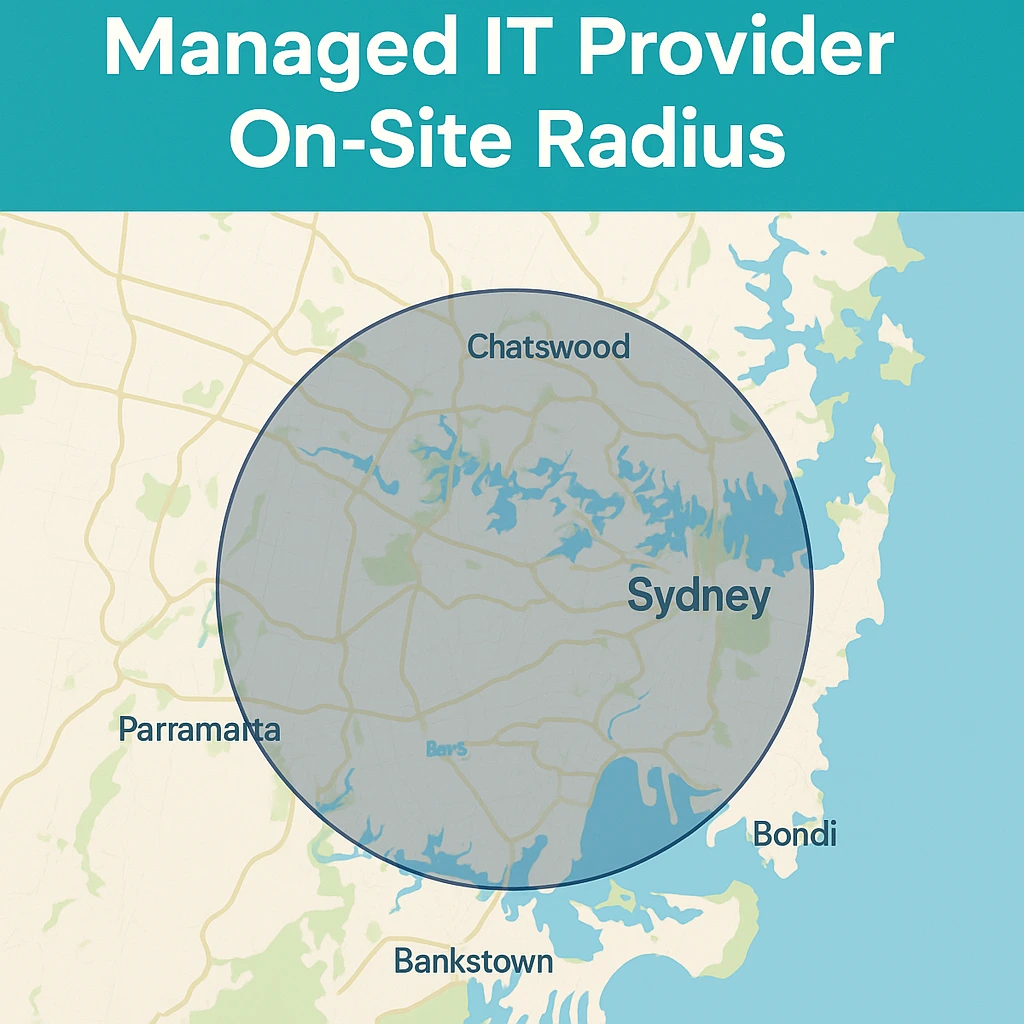
Sydney’s geography means a Chatswood-based MSP can reach Parramatta in 25 minutes but Penrith in nearly an hour. Confirm:
Metric | Recommended | Why It Matters |
On-site radius | ≤ 30 km CBD | Same-day hardware swaps |
Travel fee | Included or capped | Avoid bill-shock |
After-hours dispatch | 60 min | Critical for retail & health |
Many providers outsource L1 tickets offshore. That’s fine—if L2/L3 engineers and depot stock remain local.
Factor 3 – Security Stack & Essential Eight Alignment
Your MSP should map its tooling to the Essential Eight. Minimum stack:
- MDR/EDR endpoint defence
- Patch automation ≤ 14 days
- MFA enforcement across cloud and VPN
- Immutable back-ups
Verify SOC location and escalation run-books. If the provider shrugs at Essential Eight maturity levels, keep shopping.
Factor 4 – Certified & Tenured Engineering Team
Ask for a staffing matrix:
- Microsoft Solutions Partner badge (and number of engineers with AZ-104/305, MS-101).
- AWS Associate / Architect counts if you’re hybrid.
- Tenure: How long have their L3 engineers stayed? Under 12 months average churn = institutional knowledge loss.
Providers boasting dozens of L1 agents but only one L3 guru will struggle on complex issues.
Factor 5 – Transparent Pricing & Exit Terms
A fair Sydney all-inclusive plan runs AUD 95–120 per user per month. Scrutinise:
- Project labour – should be pre-scoped or at a clear hourly rate.
- Block-hours expiry – monthly burn-off pushes you to over-consume.
- Exit clause – aim for 30–60 days and flat off-boarding fee.
Red-flag: MSPs who insist on owning your Microsoft tenant or domain registration ‘for ease’.
Factor 6 – Scalability & Cloud Expertise
Growth is unpredictable. Quiz the provider on:
- Recent 100-seat Microsoft 365 migration (ask for downtime metrics).
- Azure and AWS certified architects on staff.
- Ability to spin up temporary DR environments in hours.
A case snippet you might hear: “We migrated 120 architectural staff to Exchange Online overnight with zero mail loss.” If they can’t produce a similar example, be cautious.
Factor 7 – Customer References & Quarterly Business Reviews
A mature MSP schedules QBRs covering:
- Ticket stats & SLA compliance
- Roadmap and budget alignment
- Security posture review
Insist on speaking with at least two live clients in your vertical and size bracket. Check Google reviews and LinkedIn recommendations for consistency.
Quick Scorecard Template
Our Google Sheet ranks vendors on all seven factors: SLA scores, security stack, staffing, pricing clarity, scalability, and references.
Use it during discovery calls and document each MSP’s score out of 100.
Frequently Asked Questions
What is a fair per-user MSP price in Sydney?
Expect AUD 95–120 monthly for all-inclusive support. Add $20–$30 per user for 24×7 SOC monitoring.
How long should an MSP contract be?
Most SMEs sign 12–24-month terms. Month-to-month exists but carries a 10 % premium.
Should my MSP handle cyber-insurance questionnaires?
Yes. An experienced provider will supply Essential Eight evidence and remediation timelines to satisfy underwriters.

